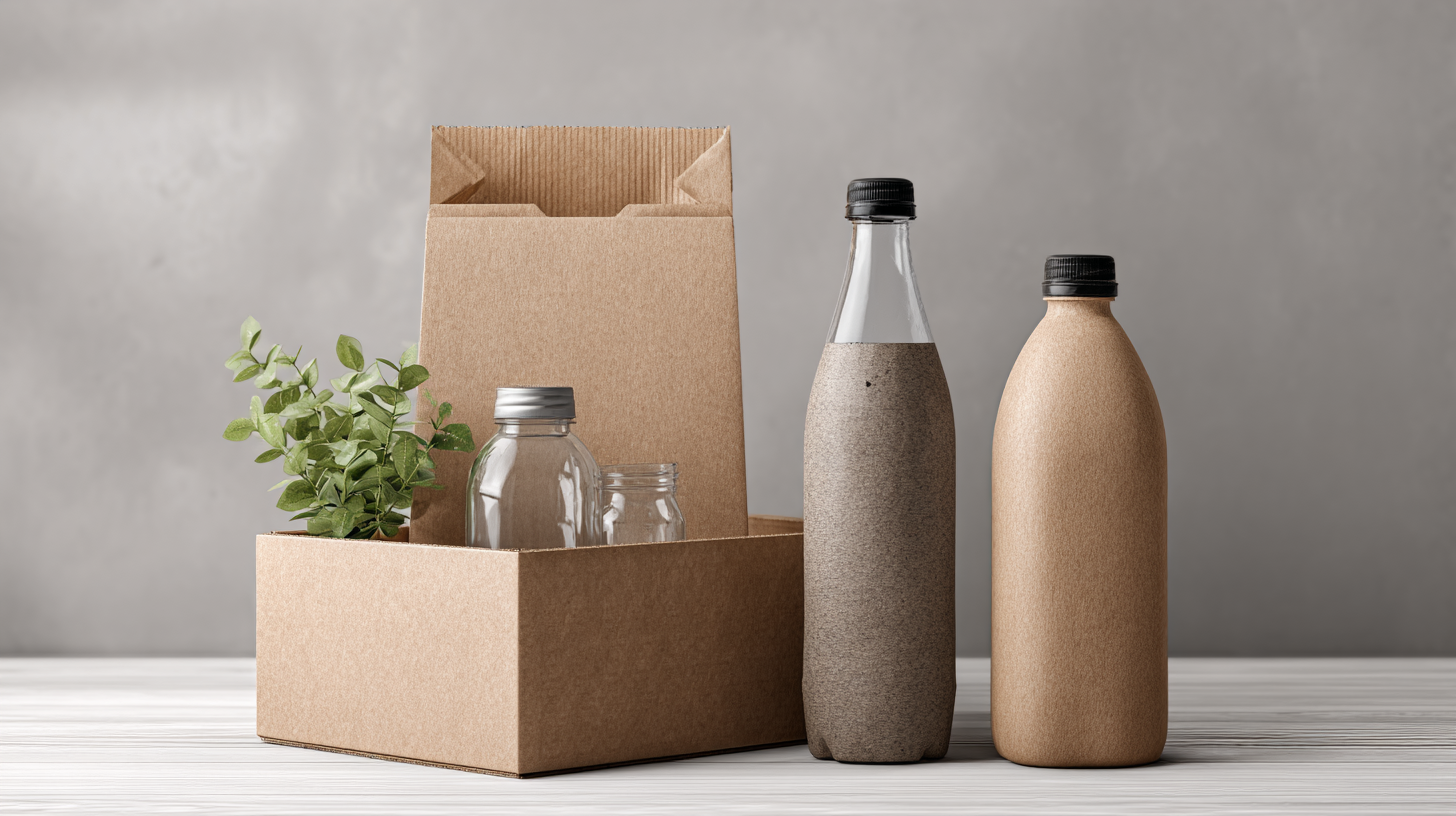In today's consumer-driven society, the pressing need to address plastic waste has led to a significant transformation in how products are packaged. The rise of environmental packaging represents not just a response to regulatory pressures, but also an opportunity for brands to innovate and connect with increasingly eco-conscious consumers.

This article explores how environmental packaging is poised to play a crucial role in reducing plastic waste by 50% by the year 2030. It provides a comprehensive guide on the various types of sustainable packaging solutions available, best practices for implementation, and the potential impact on businesses and the environment.
By prioritizing sustainability through environmental packaging, companies can contribute to a healthier planet while meeting consumer demand for responsible, eco-friendly alternatives. As we navigate this critical shift, understanding the strategies and benefits of environmental packaging will be essential for anyone looking to make a positive impact on our world.
The plastic waste crisis has reached alarming proportions, with approximately 300 million tons of plastic produced globally each year, a significant portion of which ends up in landfills and oceans. According to a report from the World Economic Forum, if current consumption trends continue, the oceans could contain more plastic than fish by 2050. This not only threatens marine life but also disrupts ecosystems and human health through the food chain. The need for urgent change in packaging practices is evident, as traditional plastic materials contribute heavily to this ongoing environmental emergency.
To mitigate these challenges, the rise of environmental packaging presents a promising pathway. Innovations such as biodegradable materials, recycled paper products, and reusable containers aim to drastically cut plastic use. Experts estimate that implementing these sustainable packaging solutions could reduce plastic waste by up to 50% by 2030. As companies pivot towards greener alternatives, consumers can play a vital role by supporting brands committed to sustainable practices.
**Tips for Sustainable Living:**
1. Choose products with minimal or no plastic packaging to reduce your personal plastic footprint.
2. Look for certifications such as FSC or biodegradable labels when selecting packaging materials.
3. Embrace reusable containers and bags, encouraging brands to innovate further in sustainable packaging solutions.

The environmental packaging sector is witnessing significant innovations that play a crucial role in sustainable practices. By 2024, the global sustainable packaging equipment market is projected to reach approximately $157.6 billion, with a Compound Annual Growth Rate (CAGR) of 7.3% expected from 2025 to 2034. This growth is largely driven by stringent environmental regulations and a rising demand from companies for eco-friendly packaging solutions. As industries pivot towards sustainable practices, innovative technologies in packaging, such as high-barrier materials, are at the forefront, promising to substantially reduce plastic waste.
Recent breakthroughs in high-barrier packaging materials showcased by industry experts emphasize the potential to transform food packaging and reduce environmental impact. With increasing consumer awareness of sustainability, companies are adopting packaging solutions that not only fulfill regulatory compliance but also address the ecological concerns of end-users. The push towards sustainable packaging not only benefits the planet but also enhances companies' competitive edge in a rapidly changing economic landscape, aligning with global trends towards sustainability and resilience in supply chains.
This chart illustrates the projected reduction in plastic waste through the adoption of innovative environmental packaging solutions by 2030. It demonstrates the anticipated impact across various industries striving for sustainability.
As the urgency to combat plastic waste intensifies, businesses must adopt eco-friendly packaging solutions to contribute significantly to sustainability. One effective strategy is to evaluate and redesign packaging materials, opting for biodegradable or compostable options that reduce environmental impact. Switching to materials derived from renewable resources, such as plant-based plastics or recycled substances, not only minimizes reliance on fossil fuels but also appeals to increasingly eco-conscious consumers. Additionally, companies can explore innovative packaging designs that require less material, thereby reducing overall waste.
Another crucial strategy involves rethinking supply chain practices. Businesses can collaborate with vendors who prioritize sustainable production processes, ensuring that every step, from sourcing to distribution, aligns with environmental goals. Implementing a take-back program that encourages customers to return used packaging can also promote a circular economy. By actively engaging consumers in sustainability initiatives, companies not only enhance their brand image but also establish a loyal customer base committed to reducing plastic waste. Transitioning to eco-friendly packaging is not just a trend; it's a necessary step toward a sustainable future.
| Packaging Type | Recycled Content (%) | Biodegradable (%) | Carbon Footprint (kg CO2e) | Cost Comparison (per unit) |
|---|---|---|---|---|
| Paperboard | 80 | 75 | 0.5 | $0.30 |
| Plant-Based Plastics | 20 | 90 | 1.2 | $0.50 |
| Glass | 100 | 0 | 1.5 | $0.80 |
| Metal | 70 | 0 | 2.0 | $1.00 |
| Compostable Materials | 85 | 100 | 0.3 | $0.40 |
Consumer awareness and behavior are pivotal in the shift towards sustainable packaging solutions. As the global demand for eco-friendly options rises, consumers are actively seeking packaging that is recyclable and clearly labeled, reflecting a preference for minimalistic designs. This heightened awareness drives companies to adapt their packaging strategies, as seen in the growing sales of products that emphasize environmental and social responsibility. Research indicates that consumers are willing to pay more for sustainable packaging, demonstrating their commitment to addressing environmental issues, particularly the threat of microplastics.
Furthermore, various markets worldwide are experiencing significant shifts in consumer expectations regarding sustainability. In regions like India, a substantial percentage of consumers express deep concern for climate change and sustainability, influencing brands to prioritize eco-friendly practices. As consumers navigate the complexities of identifying sustainable packaging, retailers are challenged to enhance clarity and transparency in their offerings. This evolving landscape underscores that sustainability is not just a trend but an integral part of consumer decision-making, shaping both brand strategies and market priorities.
To measure the success of environmental packaging in reducing plastic waste, it is essential to establish key performance indicators (KPIs) that reflect tangible impacts. First, tracking the percentage reduction in plastic usage across product categories can serve as a pivotal metric. By analyzing data from companies that adopt sustainable materials, stakeholders can quantitatively assess progress towards the goal of reducing plastic waste by 50% by 2030. This evaluation should extend beyond mere compliance to consider the overall lifecycle of packaging materials, emphasizing circular economy principles.
Additionally, consumer engagement metrics, such as the increase in the adoption of reusable packaging solutions, play a vital role in measuring success. Surveys and market analyses can provide insights into consumer preferences and behaviors, highlighting a shift towards environmentally friendly options. Furthermore, measuring the volume of recycled content in new packaging can indicate the effectiveness of recycling programs and commitments to sustainability. These metrics collectively enable companies and policymakers to not only gauge the impact of environmental packaging but also to refine strategies that foster greater sustainability in consumer habits and industrial practices.
